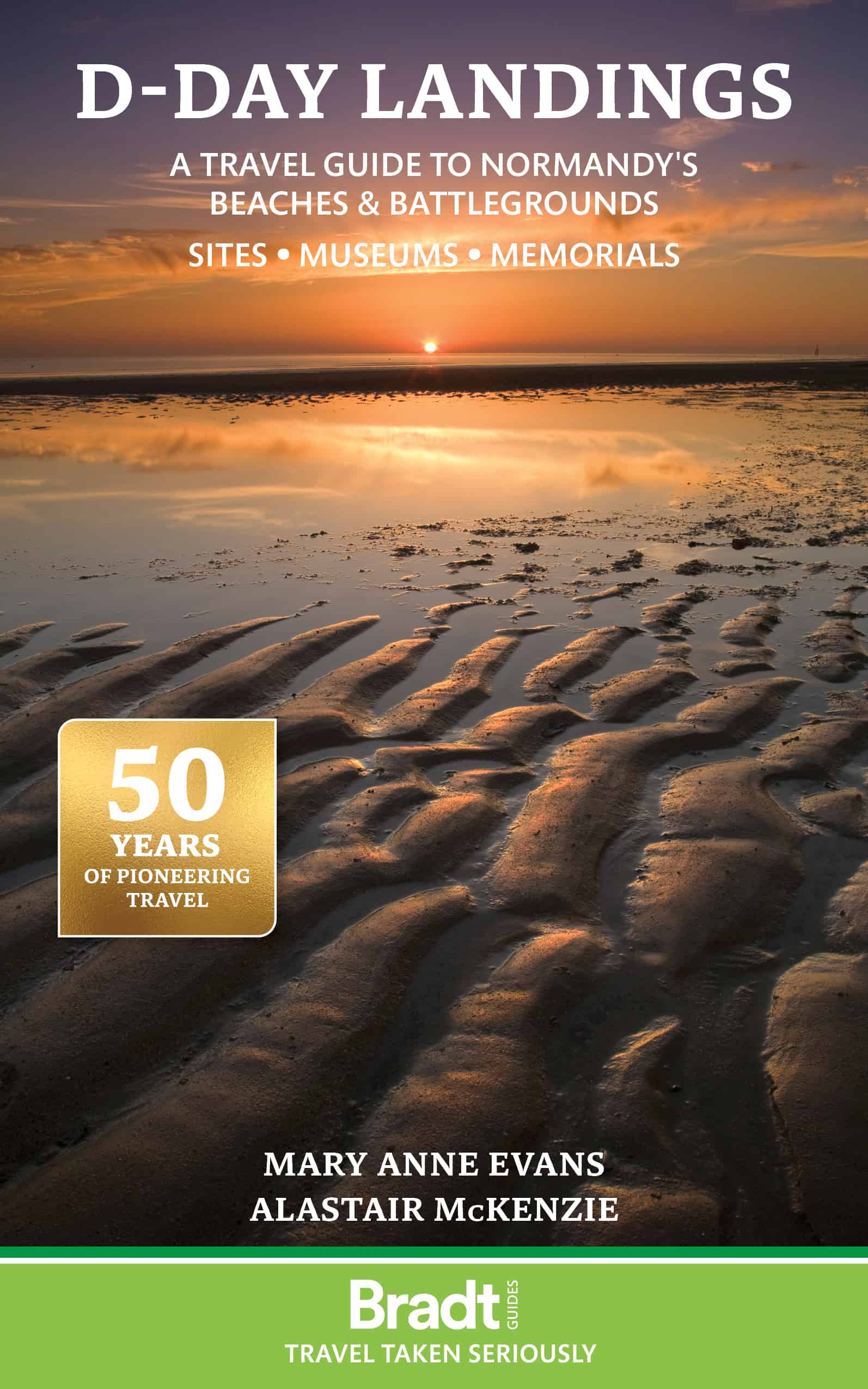D-Day Landings
by Mary Anne Evans & Alastair McKenzie
D-Day Landings: A Travel Guide to Normandy’s Beaches and Battlegrounds, Sites, Museums and Memorials – expert tips and travel information for visiting sites D-Day and Battle of Normandy sites, including Sword, Juno, Gold, Omaha and Utah landing beaches. A simple-to-follow guide for independent travellers, it includes maps and driving instructions.
Size: 135 X 216 mm
Edition: 1
Number of pages: 136
About this book
Published to commemorate the 80th anniversary of the military mission that changed World War II, D-Day Landings: a Travel Guide to Normandy’s Beaches and Battlegrounds is Bradt’s new guidebook to visiting beaches, memorials, museums, battlefields and other sites associated with D-Day and the Battle of Normandy (Operation Overlord). A simple-to-follow, portable guide for independent travellers, it includes maps and driving instructions to help visitors go back in time to explore World War II history.
Written by two experienced travel writers who, between them, are experts in France and military history, D-Day Landings is designed for visitors who want to see all or part of Normandy. Covering the ground from the D-Day landing beaches (Sword, Juno, Gold, Omaha and Utah) up to the Falaise Gap and Cherbourg, it encompasses both every major site and a host of smaller, less well-known locations – venturing well beyond the coast to include sites associated with the capture of Cherbourg (D+20) and the closing of the Falaise Gap (D+76), which marked the end of the Overlord campaign.
The book is organised geographically in a lawnmower pattern along the landing beaches and then back again through the inland battlefield locations, encouraging readers to explore the less well-known but critically important Battle of Normandy sites. D-Day Landings also uncovers unexpected features such as a ‘concrete panzer’ pillbox topped by a tank turret around which Utah Beach Museum was constructed.
Quirky snippets and human stories colour the text. Learn how Lord Lovat’s Commando Piper Bill saw himself as a ballerina or how the Utah Beach landings were accidentally more successful than planned. Meanwhile, children and adults alike will love the ‘history-spotter’ tick-boxes, such as ten Advanced Landing Ground site plaques to tick off.
Whether you are a military-history enthusiast, have family who fought in Normandy or are simply visiting northern France on holiday, Bradt’s D-Day Landings is the guidebook to both plan your trip and take with you.
Before ordering ebooks from us, please check out our ebook information.
About the Author
Mary Anne Evans has over 35 years’ experience writing and editing guidebooks and travel articles. Having started visiting France when she was five, she now owns a house in the Auvergne and runs her own specialist website (Maryannesfrance.com), which outlines suggestions for trips to French regions, previews forthcoming events and offers practical travel advice. Normandy has always been one of her favourite destinations thanks to its proximity, long sandy beaches, great cities and shared history. A visit in 2008 to the newly opened Visitor Centre at the Normandy American Cemetery and Memorial revealed compelling and emotional stories about ordinary individual soldiers involved in the fighting. It set Evans off on many journeys around the D-Day Landing beaches. New sites like the British Normandy Memorial, which opened in 2021, have revealed fresh insights as she discovers ever more about the history of Operation Overlord.
Alastair McKenzie (mechtraveller.com) was a travel editor and presenter in local, national and international radio (Classic FM) for a decade from 1989, before moving online where he became an active member of the travel blogger and content creator community, and a regular speaker at social media travel conferences. A member of the British Guild of Travel Writers since 2002, he now runs a specialist niche blog (mechtraveller.com), which focuses on mechanical, technical and historic points of interest for travellers, including battlefield sites and military museums. Like the Allies, he first came to Normandy as a young man by sea. During the eighties he sailed and skippered yachts around most of the harbours on the European coast from Holland to Spain, including Ouistreham & Cherbourg. Since then he has explored most of Normandy by land and written about its key D-Day sites.
Additional Information
Table of ContentsChapter 1 General Information
Chapter 2 Practical Information
PART 2 The Normandy Coast
Chapter 3 SWORD
Chapter 4 JUNO
Chapter 5 GOLD
Chapter 6 OMAHA
Chapter 7 UTAH
PART 3 The Bocage and Beyond
Chapter 8 St.Lo/Cherbourg
Chapter 9 Bayeux/Caen
Chapter 10 Falaise Gap




